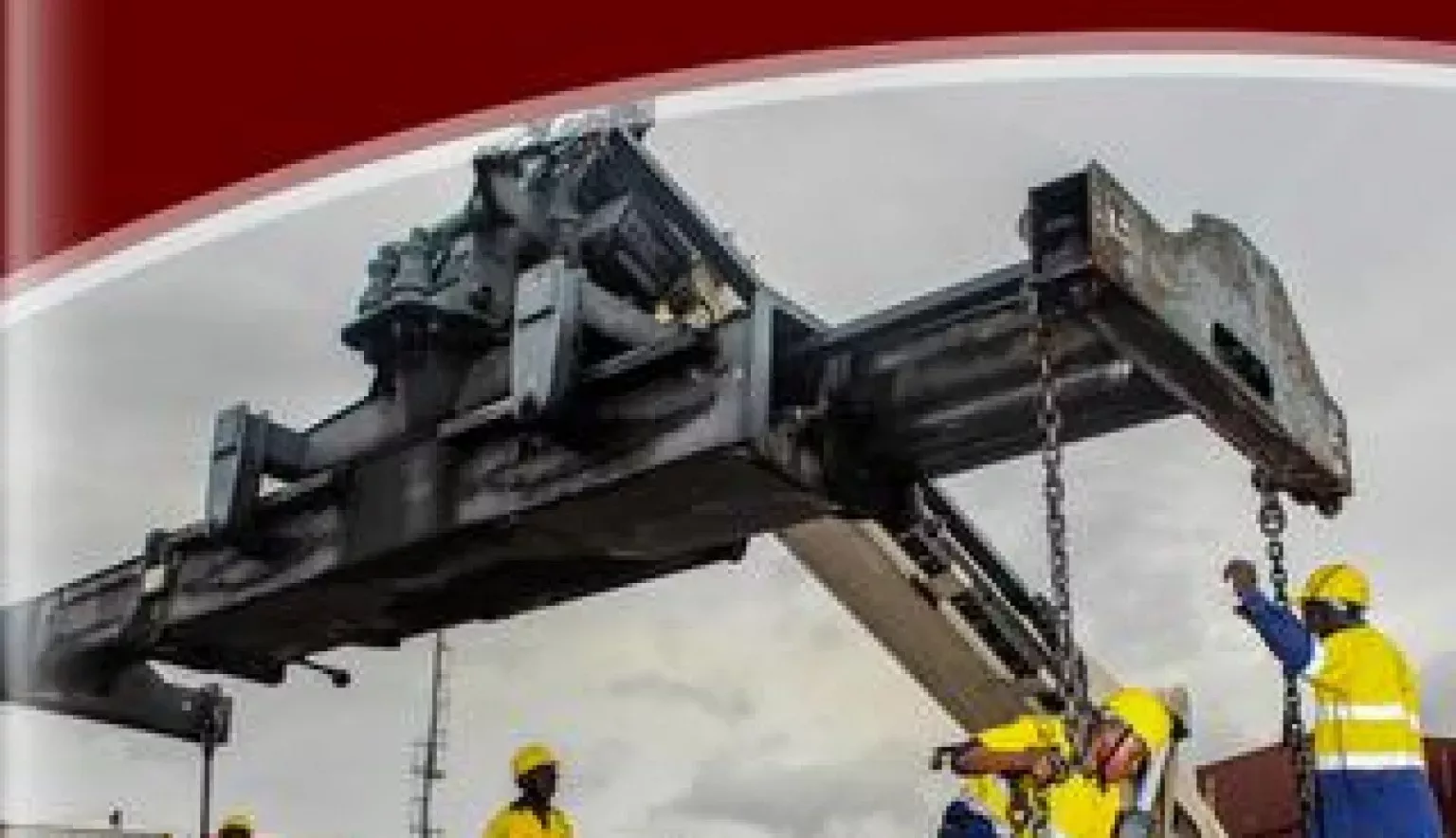Makupa Transit Shade Container Freight Station continues to boost efficiency at the Port of Mombasa after a decade in operation.
INTRODUCTION
The Port of Mombasa – East Africa’s shipping gateway to the world nestled in a harbour on Kenya’s southern coast.
For centuries it has served as a trading outpost for Arabian and later Portuguese settlers, and today it continues to welcome cargo of all shapes and sizes from all around the globe.
Indeed, the first half of 2018 has been a record-breaking one. January to June saw the port register a 2.4 percent growth in throughput compared to the same period last year, a massive 83.6 percent of this traffic being imports into the country.
Containerised freight is a key driver of this growth, the amount of twenty-foot equivalent units (TEUs) reaching 106,153 in H1 2018, up almost seven percent on the previous year.
“Mombasa port is a link to the landlocked countries like Uganda, Southern Sudan, Rwanda and also as far as DRC,” comments Richard Mutinda, General Manager at Makupa Transit Shade Container Freight Station (CFS), based at the port.
“Being also a transhipment port, the efficiency of its operations plays a major role in driving up the economy, not only in Kenya but also in the region. Vessel turnaround is crucial in the supply chain, hence the need to have a seamless flow in the port operations at Mombasa.”
CUTTING CONTAINER CONGESTION
This is exactly the reason Makupa CFS came into being in December 2007.
Licensed by Kenya Revenue Authority to handle local and transit imports, transhipment and exports, its primary business is to handle containerised cargo, break bulk cargo, while also offering stripping and RoRo (roll-on roll-off) services, heavy equipment and project cargo.
“The background of CFS in Kenya was mainly to address the issue of congestion at the port, which was costing shippers and national and regional economies a lot of money,” Mutinda adds.
“Cargo owners would have their containers stuck at the port for a very long time due to congestion. Vessels would spend weeks before discharging containers to the terminals due to lack of space. Our concept became an effective solution to this problem by providing additional space for cargo storage pending clearance.”
Makupa CFS has a maximum standing capacity of 2,200 TEUs, and after taking into account operational considerations and dwell times, monthly output is around double this number.
“Kenya Ports Authority recognises that CFS helps with decongestion,” Mutinda continues, “but the real benefit that we offer is a strong focus on efficiency. We do not want to do the same as the port or other container freight stations. We aim to be much better.”
CELEBRATING A DECADE
Mutinda has been with the Company since 2010, bringing with him a wealth of experience in the logistics management industry. He puts the longevity of Makupa CFS’s existence, which has now passed 10 years, down to its level of efficiency in handling cargo.
“Our aim is to transfer cargo promptly upon discharge, store it safely, serve customers quickly and ensure cargo is loaded out in good time,” Mutinda says. “We provide predictable levels of service at predictable levels of efficiency, delivering cargo in the condition they were shipped.
“Measurements are used to understand processes and then monitor performance to optimise the process. Key operational processes include cargo transfer from vessel to CFS, storage planning, verification services and loading out after customs clearance. We will continue to improve on these services and meet customer and market demand.”
Central to these services are Makupa CFS’s employees, who are all well-qualified and experienced in the field. Most of these staff are local, although Mutinda does point out that some external hiring is sanctioned in order to boost experience levels even further.
The Company also recently acquired a new yard in a bid to boost capacity and efficiency to a new level, a facility which will increase space for project cargo and breakbulk imports.
Makupa CFS’s location is another important differentiator for the business, as highlighted by Mutinda.
“The business invested heavily to secure a strategic location to ensure cargo handling processes are improved and not to add further delays in the delivery cycle,” he explains. “Our CFS is within a two-kilometre radius of the container and conventional berths.”
The site is immediately adjacent to the port itself, sharing a common boundary wall, while the Company also has its own access gate.
FUTUREPROOFING
For Mutinda, technology will play a key part in ensuring Makupa CFS maintains its leading position for another decade and beyond.
“Technology has taken centre stage in all organisations and Makupa embraces this by deploying the latest solutions in container handling and management of related services,” he adds.
“We are planning to implement smart gate systems where human intervention will be limited and the tracking accuracy will improve. This will be a major boost which will eliminate time used in physical checks at the exit and entrance gates.”
Looking ahead to 2019 and beyond, the General Manager is confident of enjoying another successful period.
Mutinda concludes: “We as a company will be looking at new opportunities in the market which will include tapping into the blue economy and agri-business to provide logistics services, which includes storage and market access.”































